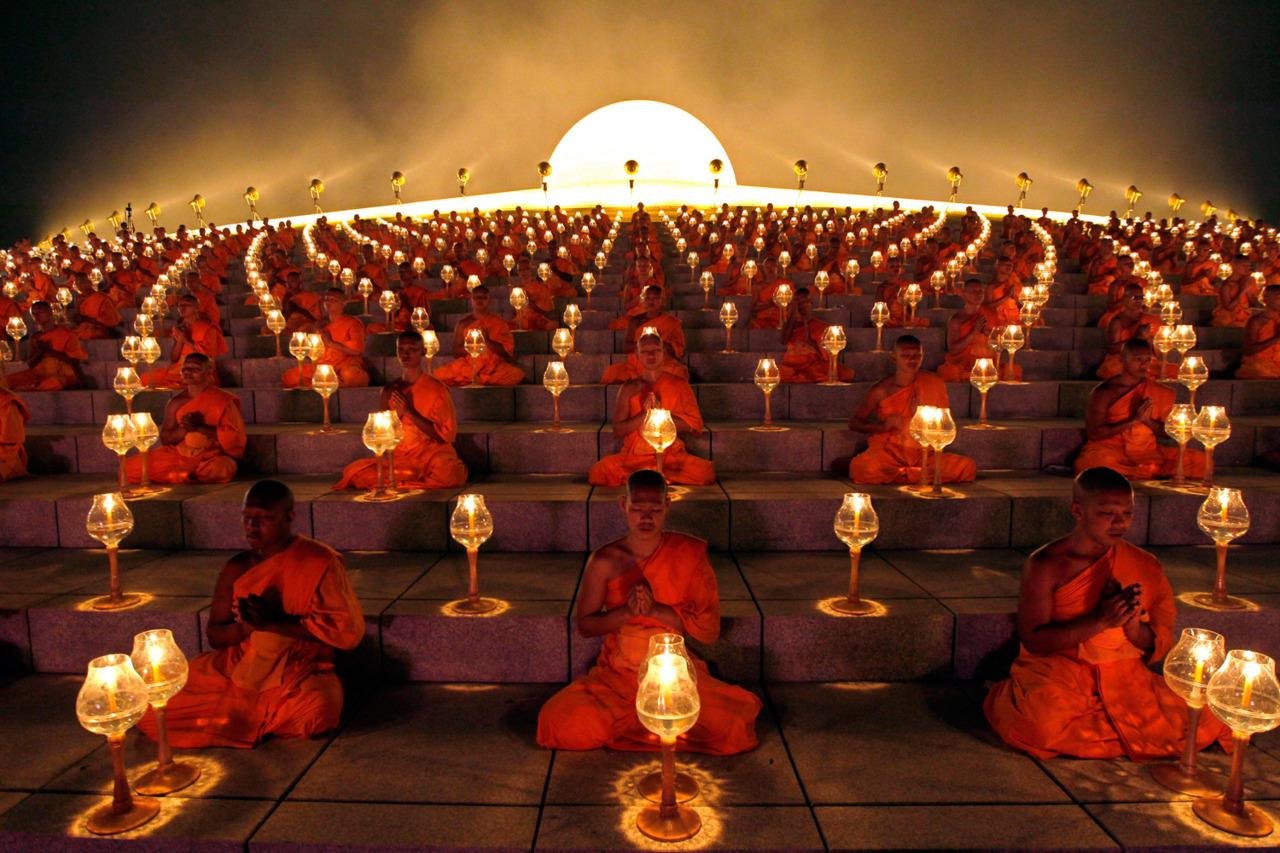What Is Theravāda Buddhism?
Theravāda is based on the Pāli Canon the earliest complete collection of the Buddha’s discourses and teachings. It emphasizes:
The Four Noble Truths
The Noble Eightfold Path
Meditation and Mindfulness (Vipassanā and Samatha)
Monastic discipline and ethical conduct
Theravāda sees the Buddha not as a god but as an enlightened teacher whose guidance can help others achieve the same awakening through wisdom and self-effort.
What Is the Goal of Theravāda?
The ultimate goal of Theravāda Buddhism is to attain Nibbāna (Nirvāṇa) a state of perfect peace, freedom from suffering, and liberation from the cycle of birth and death (saṃsāra).
This goal is achieved through:
Moral discipline (sīla)
Mental cultivation (samādhi)
Wisdom (paññā)
Theravāda encourages deep insight into the nature of reality: seeing things as impermanent (anicca), unsatisfactory (dukkha), and non-self (anattā).
The Teachings of the Elders – A Path of Wisdom, Ethics, and Liberation
Theravāda Buddhism, often called the “Teaching of the Elders,” is the oldest surviving branch of Buddhism. Rooted in the original teachings of the Buddha over 2,500 years ago, it emphasizes personal insight, disciplined practice, and the goal of liberation from suffering (Nibbāna).
It is the dominant tradition in countries such as Sri Lanka, Myanmar, Thailand, Laos, and Cambodia, and has also gained followers in the West.
Theravāda Buddhists focus on both monastic and lay practices, including:
Meditation: Practicing mindfulness and insight to purify the mind
Generosity (Dāna): Supporting the monastic community and helping others
Ethical Living: Following the Five Precepts and living with integrity
Study: Learning from the Pāli scriptures and commentaries
Observance of Uposatha Days: Ritual days for deepening spiritual focus
Pilgrimage: Visiting sacred Buddhist sites, especially in South and Southeast Asia
Monks and nuns follow Vinaya rules, while laypeople engage in devotional activities and seek to live morally upright lives in line with the Dhamma.
Theravāda is practiced in:
Sri Lanka (home to a strong monastic tradition and scriptural preservation)
Myanmar (Burma) (known for its meditation lineage and lay involvement)
Thailand (famous for forest monasteries and revered meditation teachers)
Laos and Cambodia (with deep cultural integration of Theravāda values)
Western countries (with growing interest in Vipassanā and mindfulness)
Theravāda has also inspired major global meditation movements, including Goenka’s Vipassanā retreats and forest monasteries abroad.
The Three Characteristics: Impermanence (anicca), suffering (dukkha), and not-self (anattā)
Kamma (Karma): Intentional actions that shape our future experiences
Rebirth and Liberation: Escaping the cycle of saṃsāra through enlightenment
The Role of a Teacher: Respecting monastics and spiritual guides as supporters of the path
Theravāda Buddhism has preserved the earliest known form of Buddhist teachings, kept alive through a strong monastic lineage and oral tradition. Its influence is seen in:
The global mindfulness movement
Scholarly study of the Buddha’s original words
International meditation retreats and Vipassanā centers
Promotion of peace, ethics, and spiritual simplicity
We Work Together
Lorem ipsum dolor sit amet, consectetur adipiscing elit, sed do eiusmod tempor incididunt ut labore et dolore magna aliqua. Dui vivamus arcu felis bibendum ut tristique et egestas quis.
Become a volunteer
Why Learn About Theravāda?
Understanding Theravāda Buddhism offers a window into the original teachings of the Buddha and provides practical tools for inner peace, ethical living, and deep spiritual insight. Whether you’re a seeker, a student, or a practitioner, the path of Theravāda offers timeless guidance on how to live wisely and compassionately in the modern world.

